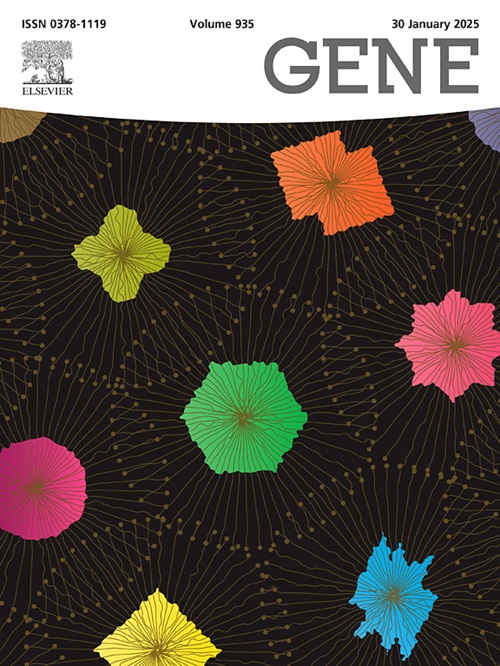Allele-specific detection of isoniazid metabolism modulating variants of N-acetyltransferase 2 enzyme and their frequencies in the Bangladeshi population
IF 2.6
3区 生物学
Q2 GENETICS & HEREDITY
引用次数: 0
Abstract
Tuberculosis is one of the oldest diseases that still affects millions of people worldwide and remains a significant public health challenge. The N-acetyltransferase 2 (NAT2) enzyme metabolizes isoniazid (INH), a primary antibiotic in tuberculosis treatment. The single nucleotide polymorphisms (SNPs) of NAT2 affect the metabolism and function of isoniazid. The rs1801280 (T341C) and rs1208 (G803A) variants of NAT2 are associated with INH drug responses. Individuals with the slow-metabolizing rs1801280 variant of the NAT2 enzyme are at a higher risk of INH-induced liver damage and require lower doses or longer treatment regimens. At the same time, individuals with the fast-metabolizing rs1208 variant are at risk of treatment failure due to rapid drug metabolism. Genotyping of the NAT2 variants can help clinicians personalize tuberculosis treatment, optimize drug doses, and thus minimize adverse effects. Under this study, an allele-specific PCR (ASPCR) method was developed for genotyping the NAT2 variants, and the results were validated through targeted sequencing. The allele frequencies at the rs1801280 locus were 0.60 for the T allele and 0.40 for the C. For rs1208, the participants’ allele frequencies were 0.27 for the G allele and 0.73 for the A allele. This ASPCR method is quick, affordable, and could be used in routine genotyping to personalize the treatment for tuberculosis patients, leading to more effective and safer treatments. We also used molecular docking to study how the rs1801280 and rs1208 variants affect the interaction between the NAT2 enzyme and drugs. A slight change was visible in the flexibility of the amino acid residues. However, those amino acids were not involved in the ligand binding mechanism.
孟加拉国人群n -乙酰转移酶2异烟肼代谢调节变异的等位基因特异性检测及其频率
结核病是最古老的疾病之一,仍影响着全世界数百万人,仍然是一项重大的公共卫生挑战。n -乙酰转移酶2 (NAT2)酶代谢异烟肼(INH),这是治疗结核病的主要抗生素。NAT2的单核苷酸多态性影响异烟肼的代谢和功能。NAT2的rs1801280 (T341C)和rs1208 (G803A)变体与INH药物反应相关。携带代谢缓慢的rs1801280 NAT2酶变体的个体发生inh诱导的肝损伤的风险更高,需要更低的剂量或更长的治疗方案。同时,具有快速代谢rs1208变异的个体由于药物快速代谢而存在治疗失败的风险。NAT2变异的基因分型可以帮助临床医生个性化结核病治疗,优化药物剂量,从而最大限度地减少不良反应。本研究建立了一种等位基因特异性PCR (ASPCR)方法对NAT2变异进行基因分型,并通过靶向测序对结果进行验证。rs1801280位点的T等位基因频率为0.60,c等位基因频率为0.40。rs1208位点的G等位基因频率为0.27,A等位基因频率为0.73。这种ASPCR方法快速、经济实惠,可用于常规基因分型,为结核病患者提供个性化治疗,从而实现更有效、更安全的治疗。我们还利用分子对接的方法研究了rs1801280和rs1208变异体如何影响NAT2酶与药物的相互作用。氨基酸残基的柔韧性略有变化。然而,这些氨基酸不参与配体结合机制。
本文章由计算机程序翻译,如有差异,请以英文原文为准。
求助全文
约1分钟内获得全文
求助全文
来源期刊

Gene
生物-遗传学
CiteScore
6.10
自引率
2.90%
发文量
718
审稿时长
42 days
期刊介绍:
Gene publishes papers that focus on the regulation, expression, function and evolution of genes in all biological contexts, including all prokaryotic and eukaryotic organisms, as well as viruses.
 求助内容:
求助内容: 应助结果提醒方式:
应助结果提醒方式:


